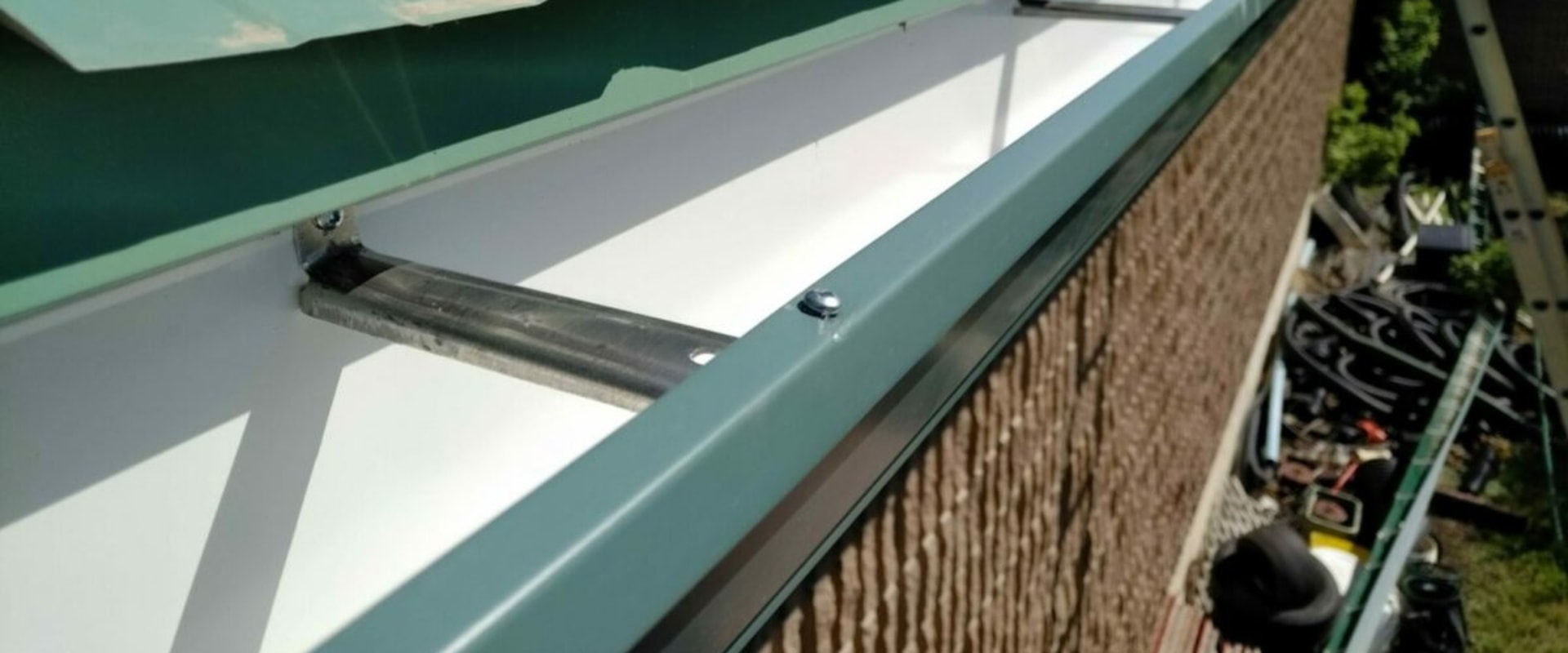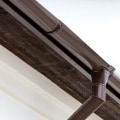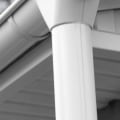The rain gutters must be securely attached to the fascia and extend along the entire length of the roof, ending with a downspout. To ensure that the gutters drain properly, make sure they are tilted (½ inch per 10 feet) toward a downspout. For gutters larger than 12.2 m (40 ft), it should be positioned so that it tilts downward from the center, pointing toward a downspout at each end. Or, you can tilt the gutters downward from each end to a single downspout placed in the center of the duct.
When installing seamless gutters, contractors use a secure, hidden system to secure the gutters to the fascia of your home. These DIY gutters come in 10-foot sections that are stitched together with a special holder and sealant. Half of the seam may remain on the floor before hanging each piece. The mounting brackets can also be fitted to the floor.
Once the gutter section is aligned with the chalk line, insert the long screws attached to each bracket into the front plate of the house to keep it securely in place. The gutters must extend beyond the roof tiles, not align with them. In addition, they are often combined with gutter protectors to minimize the amount of dirt that accumulates in gutters. Water naturally flows through shingles, along the edge of shingles, and even underneath them.
When gutter sections are installed directly in line with roof shingles, shingles impair natural water flow. Rainwater can flow into the end cap and is likely to cause a drip. Few homes can handle the appearance of anything larger than a commercial-sized 6-inch gutter, so these wider rain gutters may not fit your home. If you're looking for a gutter that not only protects your home better than the one you currently have, but also helps you improve the appearance of your home, seamless gutters may be the best option. You can see how fundamental questions, such as how far the gutters should extend beyond the roof, can make a big difference in the operation and longevity of your gutter system. In this case, when the gutter is not properly installed, snow can accumulate on the roof and gutter and even cause an ice dam. An unfortunate truth about installing gutters is that you may not be able to meet all your rainwater management needs with a conventional gutter system.
In fact, for every 10 feet of gutter length, you only need a ¼ inch drop from the center to the downspout for the gutters to drain properly. As you may have gleaned from that example, there are no national rules on how to install rain gutters. The purpose of gutters is to collect rain or melted snow from the roof line and channel water away from the foundations. Our goal is to help homeowners like you find the highest quality gutter resources available, including the information you need to know to make sure your gutters are properly installed so you can keep your home free from water damage and other problems. Rather than letting them fall into the gutter channel, you may want your gutter installer to trim the shingles backwards. For households in most regions of the country, gutters and downspouts are needed to collect and transport rainwater. Many homeowners take care of their damaged and leaky gutters because they simply don't see that the reward of new gutters outweighs the effort needed to replace them.
Maybe you need to fix a shingle situation in the roof or you need to add a downspout between an upper gutter and a lower roof gutter.



